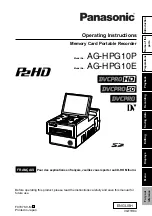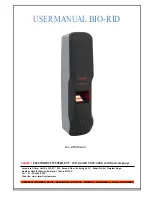
Page 11
PRINCIPLE OF OPERATION
Two vertical spinning beaters at the rear of the spreader expel manure in a uniform spread pattern. Each
beater is driven by a hydraulic motor. A PTO driven hydraulic power supply on the spreader provides power
to the beaters. The hydraulic pump is two stage thereby supplying independent power to each beater motor.
A wide heavy duty belt covers the box floor. At the front of the spreader, this belt is attached to a sliding
gate. At the rear, this belt goes around a winged idler pulley and on the lower side is connected to a drive
chain. At the front of the spreader, this chain is driven by a hydraulic motor driving a planetary gear box
and sprocket that is powered by the tractor hydraulic system. See figure 1. Driving the belt toward the rear
of the spreader pulls the sliding gate rearward to move the load toward the beaters. A manually adjustable
flow control in the drive chain motor circuit regulates the speed the gate moves.
An end gate at the rear of the spreader is raised and lowered by two hydraulic cylinders, powered by the
tractor hydraulic system. See figure 5. This gate must be lowered during loading to prevent packing of the
material into the beaters and to help prevent leakage during transport.
PRE OPERATION CHECKLIST
1. Carefully study and understand this manual.
2. Do not wear loose-fitting clothing, which may catch in moving parts.
3. Always wear protective clothing
and
substantial shoes.
4. Keep wheel lug nuts or bolts tightened to specified torque.
5. Give the unit a visual inspection for any loose bolts, worn parts or cracked welds, and make necessary
repairs. Follow the maintenance safety instructions included in this manual.
6. Check to see that no obstructions are present in the spreader prior to start up.
7. Be sure that there are no tools lying on or in the spreader.
8. Do not use the unit until you are sure that the area is clear, especially children and animals.
9. The ball valve in the suction line must be open prior to engaging PTO (handle parallel with valve
housing).
10. Because it is possible that this spreader may be used in dry areas or the presence of combustibles,
special precautions should be taken to prevent fires and fire fighting equipment should be readily
available.
11. Don’t hurry the learning process or take the unit for granted. Ease into it and become familiar with your
new spreader.
12. Practice operation of your spreader and its attachments. Completely familiarize yourself and other
operators with its operation before using.
13. Do not allow anyone to ride on the inside or the outside of the spreader unit at any time.
HIGHWAY AND TRANSPORT OPERATION
1. Adopt safe driving practices.
2. Always drive at a safe speed relative to local conditions and ensure that your speed is low enough for an
emergency stop to be safe and secure. Keep speed to a minimum.
3. Reduce speed prior to turns to avoid the risk of overturning.












































